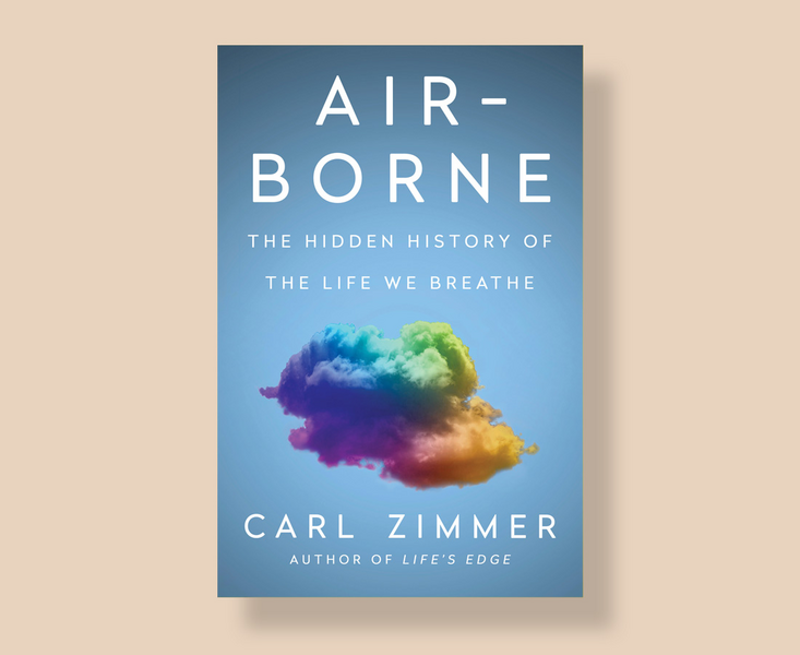January 21, 2025
4 min read
Book Review: Tiny, Airborne Threats and Humans’ Reluctance to Face Them
Carl Zimmer’s new book dives into aerobiology and the reasons humans seem unwilling to confront airborne threats

Buena Vista Images/Getty Images
Nonfiction
Air-Borne: The Hidden History of the Life We Breathe
by Carl Zimmer.
Dutton, 2025 ($32)
The air around us is more alive than we might care to think. What seems like an in-between void is really a far-reaching ecosystem populated by life-generating cells, from fungal spores to plant pollen, and organisms at the tiniest scale. We breathe in and out rivers of beings, and until the devastation of COVID-19 reminded us of the intricate intimacy between humanity and the so-called aerobiome, we often did so without much awareness.
On supporting science journalism
If you’re enjoying this article, consider supporting our award-winning journalism by subscribing. By purchasing a subscription you are helping to ensure the future of impactful stories about the discoveries and ideas shaping our world today.
The difficulty of directly observing life in the air has long shrouded its study with mystery and maintained inertia in its body of knowledge, explains journalist Carl Zimmer in his latest book, Air-Borne: The Hidden History of the Life We Breathe. Aerobiologists who think of the atmospheric environment as a habitat sometimes lament the invisibility of its biodiversity. But the field wasn’t always so underappreciated.
The air once ruled Western science. Zimmer charts the vagaries of biological and medical knowledge, where wild, dissenting beliefs can become accepted scientific facts and then return to obscurity. Miasma theory, dating to the texts of Hippocrates in the fifth century B.C.E., survived through the preservative labor of Syriac monks to become medieval Europe’s prevalent explanation of disease. “Bad air” emanated from foul rot to invade the body and disrupt the humors, causing illnesses from cholera to tuberculosis. The theory lingered well into the 19th century, when sanitarians, including Florence Nightingale, sought to prevent sickness by changing hospital bedding and opening windows to remove corrupting odors.
Germ theory, however, was in ascendance. After Antonie van Leeuwenhoek’s innovations with the microscope in the late 1600s, scientists could more easily observe microorganisms everywhere, including in the air. In the late 1800s Louis Pasteur became fixated on showing how far microbes traveled; he even climbed into the Alps to collect air samples. The emerging contagionists believed germs, not fumes, caused sickness.
This development was to the chagrin of a medical establishment that labeled contagionists “the drinking-water faith” and dismissed evidence that comma-shaped bacteria were behind cholera epidemics. Zimmer sets up the long, heated and ultimately tragic contest in the 1880s between germ theorist Robert Koch and miasmatist Max von Pettenkofer as the showdown that led to the diminishment of aerobiology in modern medicine.
But downfall from prominence did not signal the end of scientists curious about the airborne. With exhaustive detail and impressive breadth, Zimmer chronicles the multigenerational comeback of a nearly lost science. At the dawn of the 20th century, as American farmers suffered disastrous crop losses from wheat rust, the U.S. government became interested in surveying the aerial ranges of spores. Plant pathologist Fred Meier, a former watermelon expert, led the research, at times collaborating with Charles Lindbergh and Amelia Earhart to capture air samples with high-flying petri dishes.
Meier’s place at the helm would eventually be inherited by William Firth Wells, a former water-sanitation scientist who repurposed his attempted method for regenerating oyster populations with filtered eggs to create an air centrifuge for capturing pathogens. It was largely the ceaseless work of Wells and his wife, Mildred, a physician and epidemiologist, that propelled the science of airborne life through the 20th century. The path was not easy for the Wellses, as the medical establishment did not welcome the idea of pathogens traveling long ranges in the air in conditions that were not easy to control.
But, as Zimmer deftly shows, a vastly changing world made the revival of aerobiology seem fated. World War II, the cold war and the post-9/11 era fostered paranoia that enemies could be found everywhere, and what’s more fearsome than invisible airborne toxins and viruses? Those fears allowed for worldwide experimentation with air-released biological weapons and the creation of larger, more horrific “infection machines.” Zimmer writes about disturbing exposures to lethal pathogens that were not always intentional or voluntary.
This anxiety about the proliferation of human-made bioweapons proved less warranted than worries over naturally occurring diseases, such as the SARS and H1N1 outbreaks in the early 21st century. An age of rapid economic and social globalization, as well as the expansion of dense, closely quartered cities, only made the study of airborne pathogens more urgently necessary.
Yet even as the availability of DNA sequencing and improved computer models helped to confirm the reality of airborne pathways, authorities often appeared reluctant to address it. Zimmer connects institutional obstacles confronted by the Wellses to challenges faced by defiant scientists who called themselves Group 36 during the recent COVID pandemic: inconsistency and a lack of clarity from the World Health Organization, alongside political pressures. Air-Borne shows how difficult it is to harmoniously coexist with oceans of unseen microbes in the air, but the greater threat to our existence, Zimmer argues, may come from our own close-mindedness.










